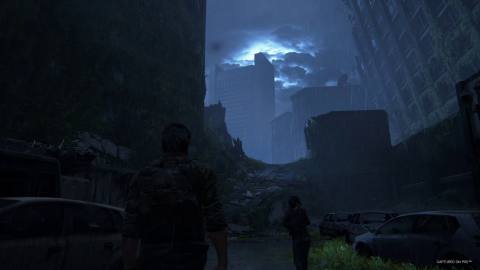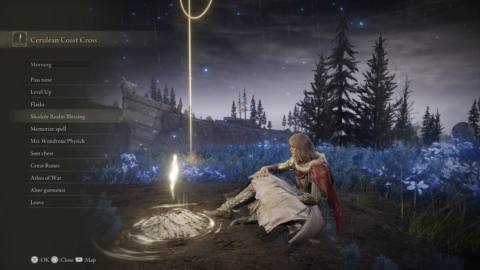If given a chance to improve on what many consider perfection, how would you do so? That’s the question Naughty Dog faced when rebuilding the PlayStation 3 classic, The Last of Us. This prospect presented the celebrated developer with one of its toughest challenges yet: incorporate the sum of every creative and technical improvement learnt over the course of their almost-40 year development career. With such massive expectations, from inside Naughty Dog and out, the team set out to do what they do best: exceed expectations.
The studio’s various teams detailed the changes you’ll experience in the game with an extensive development deep-dive, covering combat animation, lighting, audio, and more. But today, as the title launches worldwide, individuals from those teams reflect on how they chose to answer that question and what that meant for them personally as creators.
The guiding principle
“How do we take the most beloved game we’ve ever made and rebuild it?” This is the question Naughty Dog Creative Director and Writer Shaun Escayg and the team asked themselves. His personal philosophy became a major pillar for the developers from the beginning: “We build on it. We double down on areas we thought would heighten the experience or get deeper into the storytelling of it, taking all our abilities and skill and applying them faithfully to this rebuild. Just reimagine everything, heighten all the moments, and sell it even more to the player. That was the goal, our guiding light, and the challenge at the same time.”
This was the North Star Naughty Dog followed when rebuilding The Last of Us for a new generation of hardware. Each team involved in this rebuild had a tremendous task on its shoulders and took a different approach when answering that challenge.
Emphasizing emotion through lighting
For Art Director Erick Pangilinan and the visual departments, it meant a journey back to 2013 and thoroughly studying the original game.
“We tried to identify the most important scenes, storylines, and events in the game that we should focus on to make sure that it maximizes the impact on the game,” Pangilinan explains. “Prioritizing and figuring out how we can pace all of these important moments is the first thing to do, to analyze the original game better and better understand it. That’s when you start formulating how you can emphasize that. What are all the lessons we learned from doing The Last of Us Part II, and how can we apply that to something we did with ourselves ten years ago?”
“What are all the lessons we learned from doing The Last of Us Part II, and how can we apply that to something we did with ourselves ten years ago?”
– Art Director Erick Pangilinan

Many members across the teams involved in the project share similar accounts of how their process meant countless side-by-side comparisons to keep the rebuild faithful to the original. Concept Artist Sebastian Gromann discussed how the team’s challenge was much deeper than just matching or trying to upscale the original visuals. It was critical to analyze cutscenes, figure out narrative beats, and understand what both entailed. This naturally led to the question, “How can we use our learnings to emphasize [those moments]?” That could mean studying a screenshot, figuring out time of day in a scene, how and what part lighting played, and applying modernized techniques.
“If the scene is about tension during a very intense moment, then we could decrease the fill, increase the key light,” Gromann examples. “Then we could change the sliders slightly to push that emotional response a bit more.”
Reshaping an iconic soundscape for 3D audio
When it comes to sound, Audio Director Neil Uchitel broke down how pulling the original dialogue and sound from the original game presented the team with a way to keep the familiar feel of The Last of Us’ world but upgrade the sonic experience for a modern console. This involved both new creative and technological developments that, in some cases, went beyond what they achieved on The Last of Us Part II.
“We actually took a lot of the original sound that we had from The Last of Us, because a lot of it was very iconic, and we didn’t want to [fundamentally] change the experience,” Uchitel said. Keeping the original performances of the actors was key to capturing that familiar experience for old and new fans. However, Uchitel added that while resources were “incredibly limited” on the original PS3/PS4 version, working on the PS5 presented an opportunity to expand the soundscape. And add they did, greatly expanding the ambiences in each level, use of the Infected murmuration from The Last of Us Part II, new recordings for the workbench upgrades, and a host of other additions and improvements.
Since Naughty Dog’s previous audio engine was incompatible with the Playstation 5’s new, exclusive audio features, such as the dedicated DSP chip and the Tempest Engine audio processing algorithm, Uchitel explains, “Our Audio programmers spent over a year refactoring our audio engine to be able to take advantage of those new features. [In addition] we changed the underlying mixing and mastering processes, which gives the game a much higher degree of fidelity and clarity.”
Setting personal limits
Similar tool changes and refurbishments happened throughout the production, from art to animation and combat, but the team also had to learn restraint. Naughty Dog pushed forward while making sure to set limits for this monumental project.
“Moving to new hardware wasn’t the issue,” Pangilinan stated. “I think it was trying to ensure we understood or remembered the art direction and purpose behind each scene in the original. Sometimes we’d forget, so we’d change them, but then that would affect the other scenes that followed. A major hurdle was making sure we didn’t change so much that it would impact the experience of what people remembered.”
“Yeah, remakes are hard,” Combat and Melee Designer Christian Wohlwend stated while weighing in on tackling this rebuild. “They’re kind of an exercise in control and patience. It’s not as simple as it seems to remake a game entirely, and it’s easy to start going overboard and start doing too much. At first, I felt we would have an easy time until I learned the bar got higher, and we felt we could just keep going. But you have to hold yourself to certain limitations on the mechanical side.”
“Remakes are an exercise in control and patience… it’s easy to start going overboard and start doing too much.”
– Combat designer Christian Wohlwend

Returning to The Last of Us held a lot of emotional weight for each and every person working on the game. Many members shared the same sentiment of being extraordinarily proud and never doubting the high standard the team had previously set.
Pangilinan brings up how the original pushed him to increase the quality bar of his work and how he was glad to have a second crack at it. Uchitel states how proud he is of the Audio Team Naughty Dog built over the years and how amazed he is at the skill level they’ve reached with the game. Lead Cinematic Animator Eric Baldwin and Lead Programmer John Bellomy shared their and their team’s ambitions to ensure the most important aspects and factors in a rebuild of this caliber were met.
Game Director Matthew Gallant sums up the studio’s sentiments on this project powerfully: “I came into the original The Last of Us as a new member of the team. I was a completely different person. At the time of this remake, I’m a dad and playing through the game and seeing Joel’s actions at the end. It gives me a different feeling than before. I’m happy that I can go through the game again, seeing things from a different angle and understanding it from a different perspective, and I hope others can share that same sentiment or find their own after all the years passed since then.”








